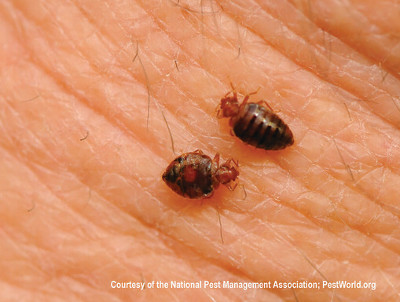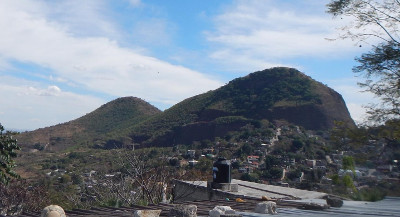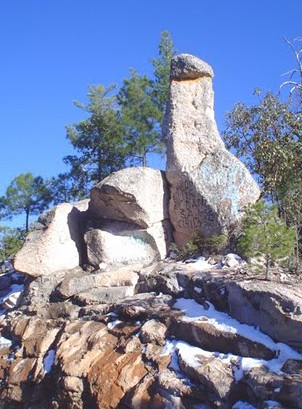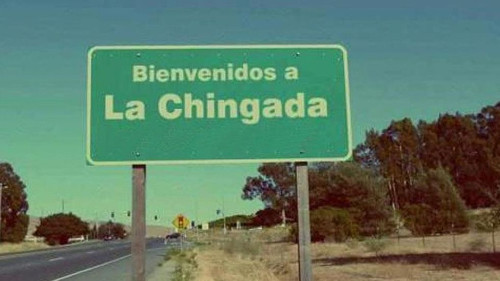Towns in Mexico with the strangest and funniest names
This is the collection of the funniest names we found after analyzing our database of tens of thousands of Mexican towns. Names like 'Pitorreal' ('Royal Pennis'), 'La Verija' ('The Vagina'), 'Salsipuedes' ('Get Out if You Can') or 'Válgame Dios' ('Oh My God!') emergefrom the popular culture of centuries, and now those names have survived as something fun for those who do not know such small towns.
Perhaps now we may be surprised by these curious names of towns, but they really come from the way the ancient inhabitants of Mexico used to assign place names to those places that were progressively inhabiting and converting them into the current towns and cities.
We have gone through our list and have selected the rarest names in this list. Get to know these towns in depth, locate them on the map by clicking on the links, viewing their photos, and analyzing their statistics.
Twenty-seven people live in this Queretaro town, but what we don't know is how many bedbugs live there. What we can intuit is that when the first inhabitants arrived at the place where the locality was located, they would find a large population of this insect, which uses the mattresses as one of its main habitats.

Mexicans use the vulgar expression "Está cabrón" to say that a task is very complicated to carry out. Really 'Está Cabrón' is a ghost town of Mexico, which its inhabitants abandoned years ago. As has happened in other small towns in Mexico, as the economic activity of the locality has decreased, its inhabitants decided to emigrate to other parts of the country, or even abroad. Livestock and agriculture were disappearing, and 'Está Cabrón' ended up without a single inhabitant. The origin of the name of this town next to Ranchoapán is still a mystery, and more than one suspects that some funny fact of the first inhabitants.
The full name of this Guanajuato's locality is 'Rancho de Guadalupe', although many people know it popularly as the 'Nalga de Ventura'. The village has 217 inhabitants, divided into 105 men and 112 women. The most popular theories about the name of this town are divided between the shape of some orography of the area with the shape of buttock, or the allusion to the part of the body of one of the first female settlers, called Ventura.
Las Tetillas in the State de Puebla is a small town of only 17 inhabitants in just 4 houses, located west of the city of Chignahuapan. The curious name of the town comes from two small mounds located north of the village, which simulate the shape of a woman's breasts. There are actually a few more localities with this name in Michoacán, or in Zacatecas, so it is common for this type of orography to baptize a few more towns in Mexico.

In this village there are only 5 people living, and the great cattle and agricultural activity of the area of Los Cabos, with numerous ranches, is the cause of this name so funny for the people. In other areas of Mexico with extensive occupation of the population in field work and livestock, similar names also exist, such as Ojo del Buey in Chihuahua or Lengua del Vaca in th State of Mexico.
This tiny town of Tamaulipas near Ciudad Mante was baptized many years ago with this vulgar word that is used in Mexico to describe a great blow, either suffered by oneself, or in a fight with another person. Undoubtedly, some unfortunate incident decades ago was the toponymic origin of El Chingadazo.
There are 20 men and 29 women living in 'Válgame Dios'. Although it is a small town in Sinaloa, the town lies in a rugged mountain range between the states of Sinaloa and Chihuahua. As you can see in the maps of 'Válgame Dios', getting there is no easy task, and the first visitors were amazed at the harshness of the terrain.
Popular legend claims that the name 'Pitorreal' was chosen from the shape of a curious stone (called "of the fertily" or "La Mexicana") that is located next to a railway line close to 4 kilometers from the center of the locality. As you can see in the following picture, the stone has the shape of a male reproductive organ. However, the real story is not so funny, and it seems that the first settlers of this town of Chihuahua wanted to baptize their small town from the name of a bird very common in the region, which is now extinct. In fact, in PueblosAmerica.com we have registered 6 localities with this name in this same State, as in the Municipality of Guerrero.

In the Valley of Tierra Caliente, in the state of Michoacán, temperatures are extremely high, reaching 50 degrees Celsius in the summer. In addition, it is a region with names of really curious towns, fruit of the way of being of its inhabitants that baptized many of the localities starting from the forms of the orography or happened facts. In 'La Verija' inhabit 15 people, divided into 8 men and 8 women, and its inhabitants are known as "verijosos".
The temperature in the Rio Bravo area, in the State of Tamaulipas, is very high in summertime. For example, the average temperature in August is usually above 35 degrees Celsius, and the atmosphere is quite torrid in summer. Probably for this reason, the first inhabitants of 'El Infierno' decided to baptize the town that now has 29 inhabitants with this warm name. In addition to this one from Tamaulipas, there are other 'hells' in Mexico, such as this one in Campeche with two inhabitants, or this another one in Sonora, with eight. In PueblosAmerica.com we have registered up to eight villages with the name of 'El Infierno'.
It is a village of 792 inhabitants, with 320 men and 472 women, located 1695 meters above sea level. Surely the first settlers of 'El Infiernillo' had a very bad time in the first years they settled in the town, and hence this curious name.
In this town of 178 inhabitants of the municipality of Francisco Mena the visitors actually do not have difficulty to leave and enter as much as they wish. But this toponym is quite popular throughout Latin America since the time of the Spanish conquest, and seems to have represented for centuries the orographic difficulties of the land, or even the captivity of some important people in various localities of the continent. In fact, in PueblosAmerica.com we have collected 36 towns in Mexico called 'Salsipuedes', located in Campeche or in Nayarit. The inhabitants of these villages claim that they are visited by many tourists who, attracted by the name, dare to enter the detours of the main roads when they read a sign indicating the direction to "Salsipuedes".

In this small town near the city of Amealco, where there are numerous livestock farms, it seems that the first inhabitants found that they had no luck with their work in the field. In spite of the bad luck of the first years, the town continued with life and at this moment they inhabit in it about 10 people.
In Mexico, if someone wants to send you to 'La Chingada', they want to show their rejection of you in a very rude way. However, you can go to this beautiful town of Jalisco without problems, because it is believed that the origin of this toponym in many Mexican localities comes from violations that occurred many decades or centuries ago, where women suffered abuse and popular culture remembered their location. As we say, there are other towns with the name 'La Chingada' in Veracruz or in Campeche. So the next time you someone sends you to 'La Chingada', you will have to ask which of them they want to send you.

At the moment, the cattle activity of this town of 639 inhabitants, located next to the river Teapa, is not very extensive. However, decades ago, the proliferation of pigs was the cause of this curious name that has surely caused funny situations to its inhabitants, not only by the name itself, but also by the demonym of 'Hueso de Purco'.
It has 114 inhabitants, divided between 58 men and 56 women, and is located at 1,378 meters of altitude next to the city of San Marcos in the State of Jalisco. The name of this small town would go back to the time of horse-drawn carriages, and its ancient settlers would baptize it in reference to the incident with some of its doors.
We do not know whether the 65 inhabitants of this small town of Durango live in a state of grace as if it were a purgatory, but we do know that the town is nestled within a beautiful mountainous landscape at more than 1,500 meters altitude. It is perhaps because of this, because it is quite close to the sky, that the first settlers of 'El Purgatorio' baptized their new settlement in this way.
Municipalities and towns of Aguascalientes
Municipalities and towns of Baja California
Municipalities and towns of Baja California Sur
Municipalities and towns of Campeche
Municipalities and towns of Coahuila
Municipalities and towns of Colima
Municipalities and towns of Chiapas
Municipalities and towns of Chihuahua
Municipalities and towns of DF
Municipalities and towns of Durango
Municipalities and towns of Guanajuato
Municipalities and towns of Guerrero
Municipalities and towns of Hidalgo
Municipalities and towns of Jalisco
Municipalities and towns of Estado de México
Municipalities and towns of Michoacán
Municipalities and towns of Morelos
Municipalities and towns of Nayarit
Municipalities and towns of Nuevo León
Municipalities and towns of Oaxaca
Municipalities and towns of Puebla
Municipalities and towns of Querétaro
Municipalities and towns of Quintana Roo
Municipalities and towns of San Luis Potosí
Municipalities and towns of Sinaloa
Municipalities and towns of Sonora
Municipalities and towns of Tabasco
Municipalities and towns of Tamaulipas
Municipalities and towns of Tlaxcala
Municipalities and towns of Veracruz
Municipalities and towns of Yucatán
Municipalities and towns of Zacatecas